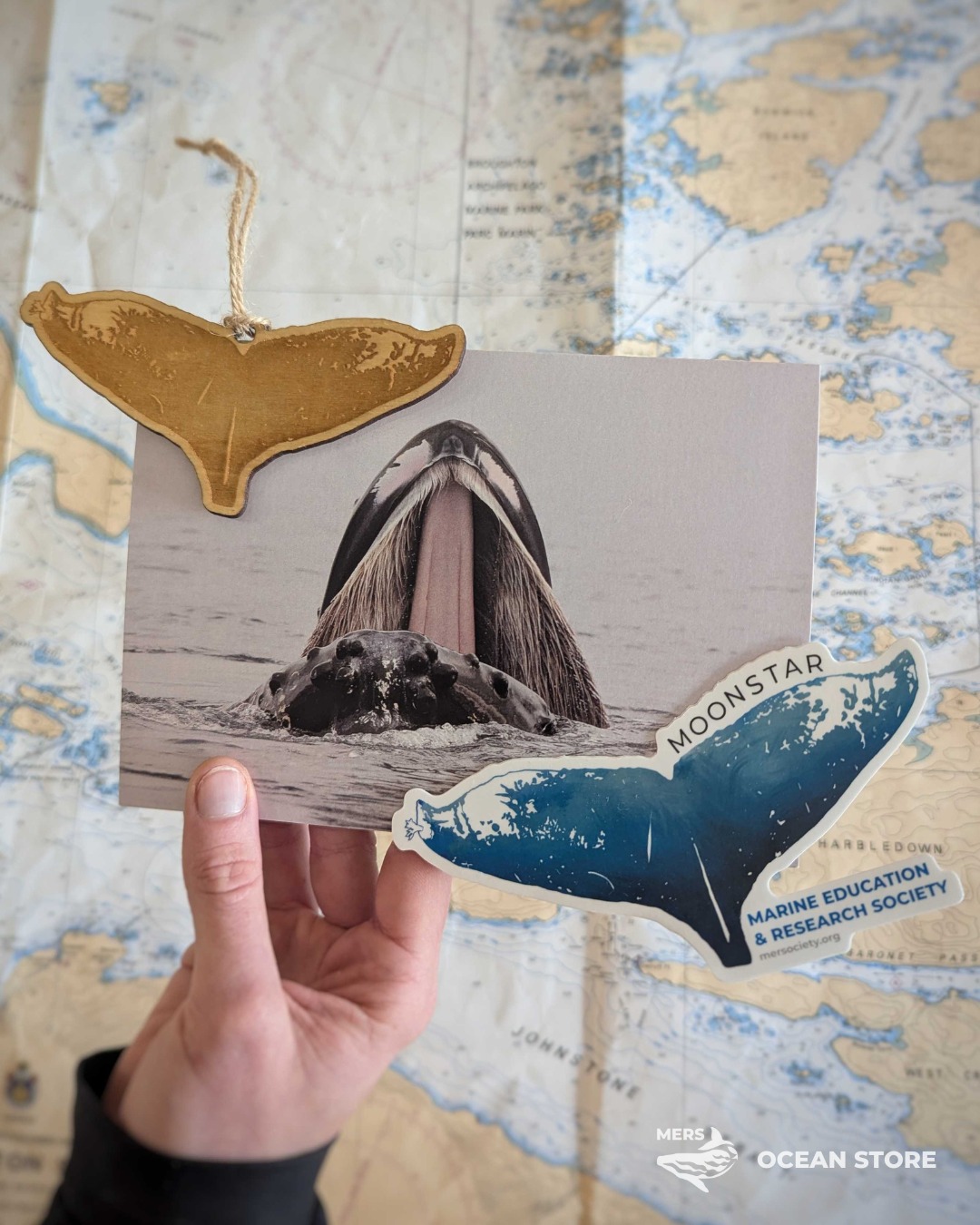We’ve received questions about B13 (Yakulta), an Orca whose fin is fully flopped over. His fin has been like this for 17 years. It’s extremely rare for this to happen in Orca in the wild. Read on.
We did a double-take too when we saw him yesterday. We were doing a survey and when we saw him in this distance, we thought he might be a Humpback Whale who has a damaged dorsal fin (Squiggle, BCX0097). But then we saw him from the side and realized it was B13 .We learned the rest of his family was further ahead – the B7 matriline of the Threatened population of “Northern Residents” (inshore fish-eating Orca).
We’ve received questions about this whale who is B13 (Yakulta).
This is a case where some whales need even more vigilance from boaters. He is very difficult to detect when not with the rest of his family. Know the legal distances to reduce disturbance at www.SeeABlowGoSlow.org.
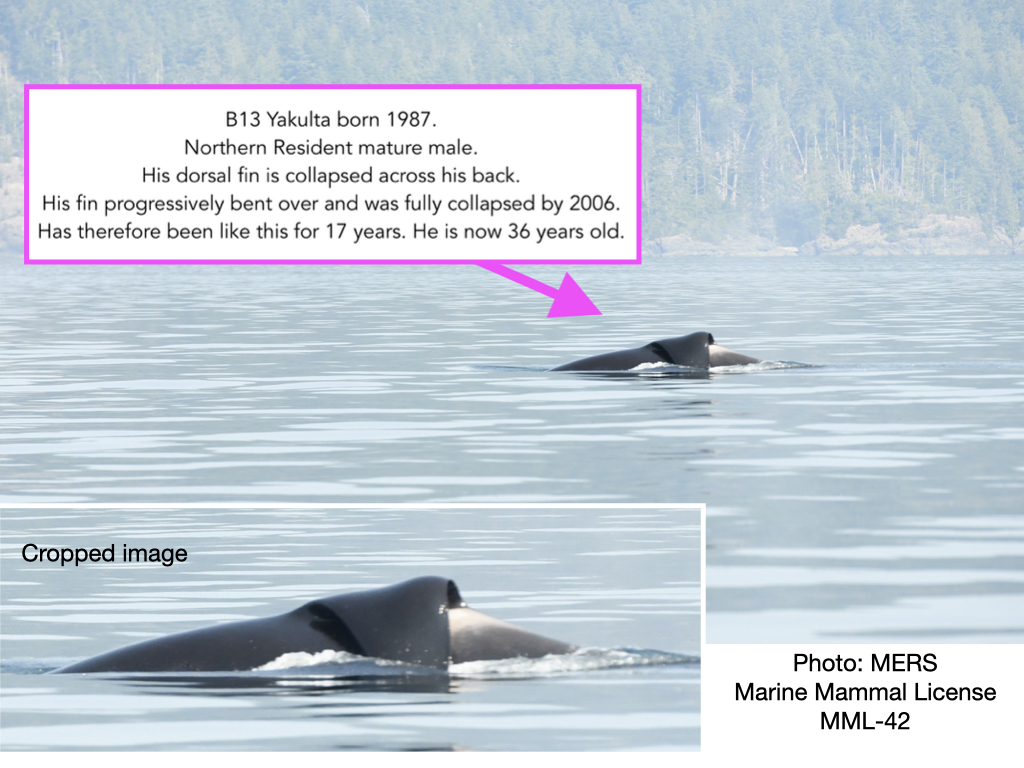
What happened to him?
Thankfully there’s really good information in a blog from the BC Cetaceans Sightings Network from 2014 entitled “The case of the flopped-over fin” by our friend and co-founder Caitlin Birdsall. Caitlin is now our Director of Development.
Her blog includes:
“As a juvenile, his fin, like all juvenile males and females, would have been small and curved. As killer whales mature, however, males and females show sexual dimorphism (males and females look different). Male killer whales begin to “sprout” in their early teens and their fin begins to grow. It takes until their late teens to reach the full height, sometimes reaching 1.8m (6ft) tall! Females always retain a smaller, more curved fin.
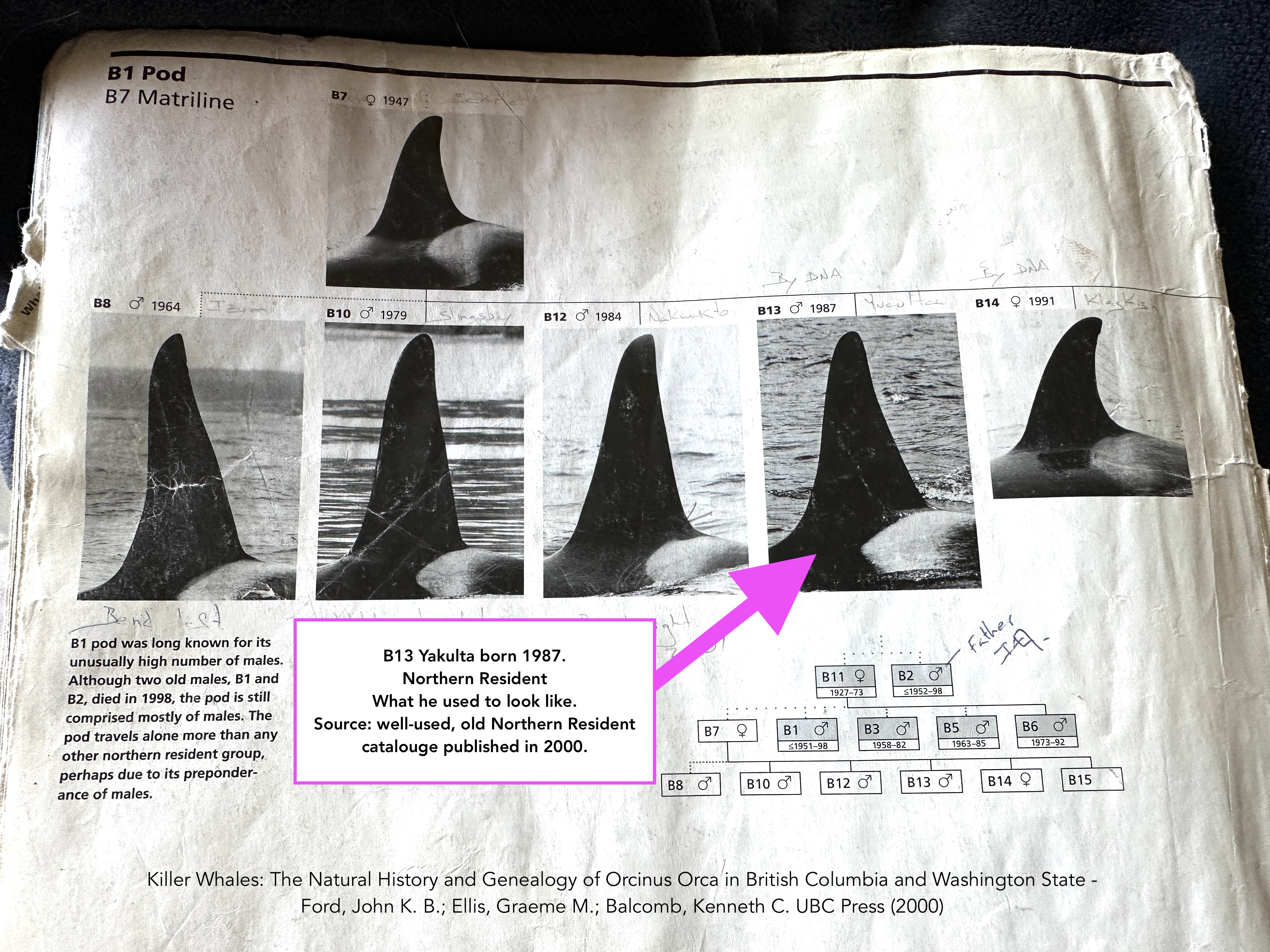
Yuculta’s fin was curved and ruffled through his teens and it fully flopped over in the summer of 2006 when he was nineteen years old. Eight years later, his unusual fin hasn’t regained any rigidity, but does not appear to impede his survival.
A killer whale’s dorsal fin consists of dense connective tissue comprised of collagen fibers. There is no bone inside. This type of tissue is vulnerable to injury and many killer whales, both male and female, bear permanent scars to their dorsal fins from injuries. Additionally, many male killer whales show signs of wrinkling in the fin as they age and some show partial flops or collapses. In fact, Yuculta’s brother, Slingsby (B10), also has a buckled dorsal fin, making them a very distinct family.
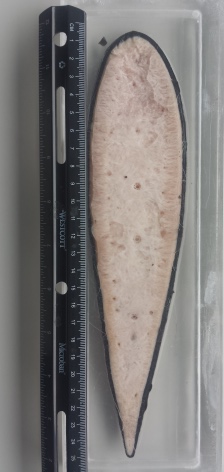
Caption: “A cross-section of a killer whale dorsal fin shows the dense connective tissue inside, but no rigid bones.”
The number of wild male killer whales with abnormal dorsal fins appears to vary from population to population. Dr. Ingrid Visser reported that in the late 1990s, 23% of the males in the New Zealand population of killer whales had collapsed, collapsing or bent dorsal fins. Of these, however, only one male was known to have a fully folded fin. During that same time, the number in B.C. was less than 5% and in Norway only 0.57%. Currently, of the killer whale populations that use B.C. waters, there are several males with “hooked” dorsal fins (where the top is curled over) and several fins with significant abnormalities, but only Yuculta is known to have a fully flopped fin.
There have been many theories as to why fins collapse in wild killer whales, including injury, age, stress, dehydration and poor health. As Yuculta has survived . . . thus far with a fully flopped fin, it is likely this state is due to an injury as opposed to any major stress or illness.”
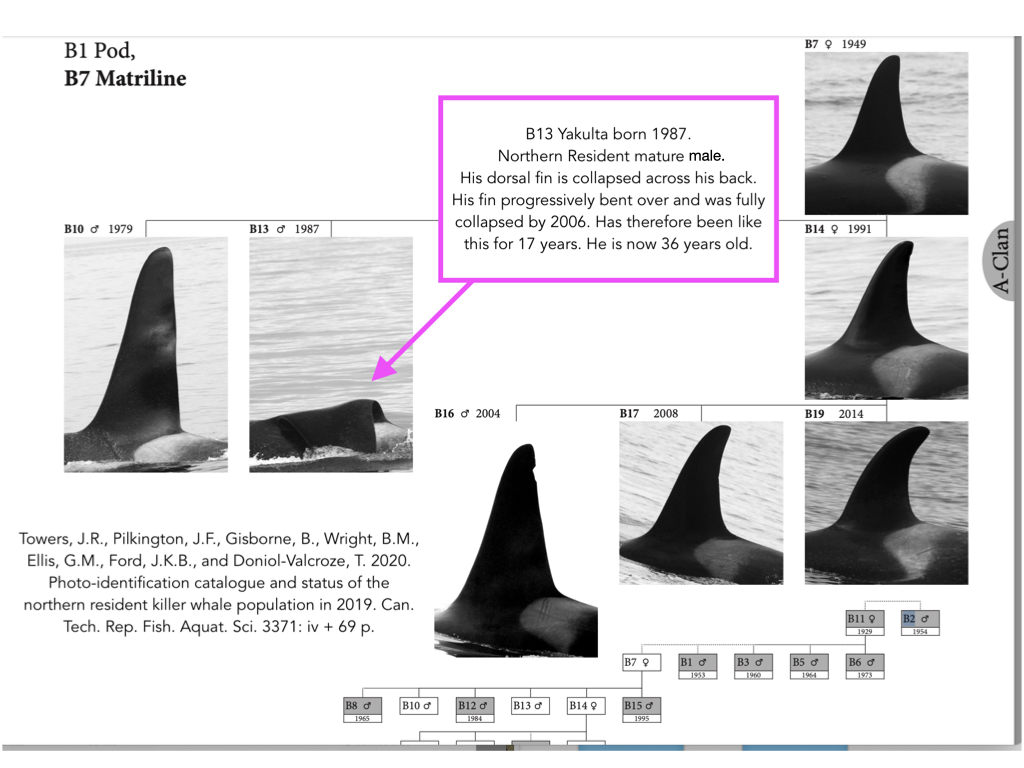
Summary of dorsal fin collapse as provided on Wikipedia:
“Scientists from the National Marine Fisheries Service (NMFS) have reported that “the collapsed dorsal fins commonly seen in captive killer whales do not result from a pathogenic condition, but are instead thought to most likely originate from an irreversible structural change in the fin’s collagen over time. Possible explanations for this include: (1) alterations in water balance caused by the stresses of captivity dietary changes, (2) lowered blood pressure due to reduced activity patterns, or (3) overheating of the collagen brought on by greater exposure of the fin to the ambient air.”[97] According to SeaWorld’s website, another reason for the fin to bend may be the greater amount of time that captive whales spend at the surface, where the fin is not supported by water pressure. The Whale and Dolphin Conservation says that dorsal fin collapse is largely explained by captive killer whales swimming in small circles due to the inadequate space in which they have to swim”.

